Wouldn’t you agree that it’s become hard to imagine travel (and life in general!) without our smart phones? These beloved iPhones & Androids have become incredibly useful tools for staying in touch & accessing valuable information from the Internet while traveling abroad.
We can use apps like Google Maps for navigating a new city, listen to a downloaded audio guide for a local museum, use Google Translate to better speak with the locals, reserve hotels as we go, and so much more. Not to mention the built-in cameras have become pretty great!
I got my first smart phone – the iPhone 4s – in 2011, along with my first iPad. They (and their newer siblings) have become my trusted travel companions. Plus, for my international travels, I frequently purchase a local SIM card for my phone, so that I’ll have inexpensive and continuous cellular access. This has worked very well for me!
Purpose of This Blog Post
If you’ve not yet purchased and used a local SIM card for your phone when traveling abroad, it might seem a little daunting at first. But, I promise it’s not that hard or techie! In this blog post, I will help demystify the world of SIM cards & and give you lots of helpful tips, so you’ll know exactly what to do.
Here’s some of the topics we’ll cover:
- When You Might Or Might Not Need a SIM Card
- Needing an Unlocked Cell Phone – What Does That Mean
- Where to Buy SIM Cards / About Prepaid Cellular Plans
- Final Setup of the SIM Card/ What to Do at the Phone Shop
- Hints for Using Airplane Mode (before getting a SIM Card)
Intro to SIM Cards
So, you might be wondering what exactly is a SIM card? Found in all mobile phones, a SIM is a tiny card that contains a chip. It’s what allows your cell phone to tap into a specific mobile / cellular network. SIM actually stands for “Subscriber Identity Module”– just in case you want to impress your friends!
Essentially, you’re temporarily replacing the home country SIM card in your mobile phone with a new SIM card from a local cellular carrier in your destination foreign country. In addition to the actual SIM, you’re purchasing a prepaid cellular plan from the carrier.
The BIG advantage of using a local SIM card is that you’ll pay significantly less for cellular service (phone, text and data). Otherwise, you may easily rack up a huge bill with international roaming charges from your carrier back home – that is, unless you strictly stay in Airplane Mode and use only WiFi for your whole trip.
My Experience With Local SIM Cards
I purchased my first SIM card in 2003 in the “early days” before smart phones – do you remember those flip phones? I shudder at the memory! That particular SIM card was primarily used for making local phone calls while traveling in Ireland.

On my 2016 & 2018 month-long trips to Spain to walk the Camino de Santiago, my iPhone was “my everything!” So, getting a local SIM card from a Spanish carrier was critical. I loved having 24/7 access to the Internet and being able to make phone calls & texts whenever I wanted.
Research Your Cellular Carrier’s International Phone Plan
There are 3 cost-effective ways for getting cellular coverage on your phone while traveling:
Use an international plan offered by your home country cellular carrier
- Buy a SIM card in the destination country – from a local cellular carrier
- Buy or rent a separate phone – with a local SIM card.
Before your trip, you should call your cellular carrier to ask about your mobile phone plan & what type of international coverage they offer for the destination countries you’ll be visiting. Ask about the costs and services provided for phone calls, texts and data (Internet).
Here are two different examples of American cellular companies to give you a flavor:
- My plan is with AT&T. For many countries, AT&T offers an International Day Pass which costs $10/day per device – for talk, text & data. You pay the daily fee ONLY for the days you use it. Of course, this can really add up if you use it a lot on a trip. In Spain, I used this plan for my first 4 days until I was able to purchase a local SIM card.
- T-Mobile offers free international data roaming on its “postpaid plans” when traveling in over 140 countries worldwide. For example, for Spain, they offer unlimited data & text with phone calls at $0.25/min. However, there is a downside — data speeds are limited to 2G, which is much slower than what you’re used to back home. But since it’s free, it might serve your needs just fine.
Benefits of Using a Local SIM Card
Once again, the key advantage of using a local SIM card for your phone is that you’ll pay significantly less for your cellular data. Thus, you won’t be paying high international roaming fees from your home country wireless plan. Plus, phone calls made within the country are essentially local calls.
In addition, having a local SIM card gives you the convenience of always being Internet-connected & not having to depend on finding WiFi hotspots. It can be a hassle to search out local cafes or restaurants with WiFi. And, you can’t always count on your lodging having WiFi – and when they do, sometimes it’s free and sometimes it’s not.
And with WiFi, just like at home, you need to be aware of basic internet security issues – and be careful with what information you send via these unsecured networks.
When You Might Or Might Not Need a SIM Card
I get a local SIM card for many of my trips but certainly not all of them. It really depends on the particular trip and whether I think I will need consistent access to the Internet and/or need to do a lot of local phone calls or texts.
Here’s some of my own different reasons for deciding whether or not to get a local SIM card. I hope this can help you in your own decision making – in weighing the pros and cons.
When It’s Good to Have a Local SIM
When I’m traveling independently – and will likely need to arrange travel logistics as I go and/or want Internet access during the touring day.
- When traveling with a group of people – and we might be splitting up at times, so it’s helpful for staying in touch with the others (via phone/text/email).
- For traveling in places where WiFi might not be consistently available – day or evening.
- When traveling (solo or in a small group) with a local guide who might be staying in different lodging, so I’ll need to reach them by phone for coordinating meet up times, etc.
- You need or want to always be reachable by certain people back home – like your family and/or business contacts.
When SIM Cards Aren’t Quite As Necessary
When I’m on a formal tour and all travel arrangements are being taken care of by the tour leader. This is a very common reason for me to travel without a SIM card.
- Situations where I will just need Internet access at the end of the day (for emails, social media, etc.) and my hotels are known to have reliable WiFi.
- One of my travel companions already has cellular access on their phone.
- There may be only a small number of times when it might be nice to have cellular service access but it’s not enough to justify the time & expense of getting a SIM card.
PART TWO: THE NITTY GRITTY ABOUT SIM CARDS
Now that you’ve decided you might want to get a local SIM card for your next international trip, let’s get into the nitty gritty details of what you’ll need to know & do. For the ease of giving examples in this part, let’s assume you’re going to be traveling to Spain.
Important Concepts to Remember:
- When you insert a local SIM card from Spain into your mobile phone, you will get a new Spanish mobile phone number which you’ll then use for making & receiving calls or texts.
- During this time, you will NOT be reachable at your regular mobile phone number because you’ve replaced (temporarily) your regular SIM card.
- So, you will want to let key people know your new Spanish phone number in case they need to reach you via calls or texts.
Your Mobile Phone Needs to Be Unlocked

However, many newer phones come “unlocked” as this feature is becoming more common. Other phones have the capability of being unlocked after your initial contract runs out. Or, in my case, I always buy my iPhones “unlocked” for travel purposes – which means I need to pay the full retail price up front.
How To Unlock Your Phone – Must Do Before Your Trip
Here’s what you need to do to unlock your mobile phone BEFORE leaving on your trip:
-
Check first with your cellular carrier — it’s possible the phone you have is already unlocked. Even so, you may still need to do a procedure to electronically “unlock” it.
- If you’ve had the phone for a while, or bought it up front, they should be able to unlock it (via a code) if you ask. You may or may not need to pay a service fee.
- In the past (before my iPhones), I was sent to a local mobile phone & electronics repair shop in San Diego that does the unlocking for a fee.
- Once the phone has been unlocked, be sure to test it before you leave on your trip. Do this by putting a SIM in your phone that you temporarily borrowed from a friend who has a phone from a different carrier.
What If You Can’t Unlock Your Phone?
If it’s not possible to unlock your phone (such as still being in an initial contract), you can buy a cheap unlocked phone before your trip. It’s also possible to buy or rent an inexpensive mobile phone in Europe (or elsewhere) that already comes with a SIM card.
I don’t have experience with either of these options, so you’ll want to do some research. That’s what Ms. Google is for!
However, here’s another good no-cost option. You may already have an old, unused mobile phone sitting in a drawer somewhere. It’s possibly still locked, but your provider should be willing to send you a code to unlock it. Or perhaps, a friend can loan you one of their old backup phones for the trip.
Thus, you could take your current smart phone (the un-lockable one) with you on the trip – and only use it with WiFi. And, put the local SIM card in the “old” cell phone (yours or a friends) which is unlocked.
Where to Buy Your Local SIM Card
You will want to wait until you arrive in your destination country to buy your SIM card – and the local cellular plan that goes with it. You might be able to buy a SIM card at your arrival airport. I have actually done this a few times. However, you might end up paying a higher price.
If possible, it’s probably best to wait until you get into town to your hotel. Usually, there’s a full range of choices in the bigger towns and cities, so that’s usually where I get my SIM cards. I will visit either a mobile-phone shop or department-store electronics counters of the local cellular carrier that I wish to use.
There are three sizes of SIM cards – Standard, Micro, and Nano (see photo near top). While all three are still used in a variety of phones, the Nano SIM (the smallest one) has been the most popular choice the past few years. Apple started using the Nano SIM with the iPhone 4 and all later phones.
SIM Cards & Prepaid Cellular Plans

In Europe, you might pay about $15-30 for a SIM that includes one month of data within the country you bought it. For example, in 2018, the Spanish SIM card I bought was a 28-day Prepaid Plan. It cost 20 euros (~$22) & included 2 GB of data. I added an extra 20€ to the SIM since I expected to use a lot of data on my Camino for social media.
Before buying one of the SIM card plans, ask the clerk about rates for calls within the country; to and from other countries you’ll be visiting; and, if you plan on calling to your home country. Also check the rates for data use and for sending/receiving a text message (called an “SMS” in Europe) in that country and outside of it.

While in the store, ask the clerk where & how you can top-up (or recharge) your prepaid SIM card if you need to add more money to the account for additional data or phone time on your travels.
Which Local Cellular Carrier To Use?

For example, for my Camino walk across the north of Spain, I researched ahead which carriers had good coverage for the areas where I would be traveling. I emailed a friend living in Spain for her suggestions, plus I went onto Camino Forums and did Google searches.
If you have local contacts in the country, you could always ask for their recommendations on best carriers – or even the hotel staff once you’ve arrived in country.
What About Visiting Multiple Countries?
If you’re traveling to a few different countries, you’ll need to do further research to see if there is a cellular carrier that can service each of those countries. Excluding Europe (see next section), there’s a good chance you might need to buy a different SIM card for each country.
That happened to me on my 2013 trip to Uganda & Rwanda. Even though they were adjoining countries AND I was using the same cellular carrier, I had to get a different SIM card when I entered the second country.
No Roaming Charges Within Europe
Here’s some great news for European travelers. The European Union (EU) introduced new roaming regulations in June 2017. These “Roam Like at Home” rules effectively ended roaming charges across much of Europe. That means you’ll usually pay no more for calls, texts, and data in other EU countries than you would in the country of purchase of your SIM card & cellular plan.

This is super if you plan to visit more than one European country, which is often the case! However, make sure to clarify this when buying your local SIM card and plan at the store – just to be safe! You want to verify that ALL (or which particular) countries you will be visiting are included under this EU rule.
Take Your Passport to Purchase a SIM Card
By law, SIM cards usually need to be registered. Most likely, you won’t be able to buy a SIM card without showing a passport or national ID card. So, don’t forget to take your passport with you to the store.
Some countries require the registration as an anti-terrorism measure. If that’s the case, it may take an hour or two after submitting the information before you can actually use the phone.
This is another good reason to use a mobile phone store or shop relatively near your hotel in case you need to return with issues, such as when your cell phone doesn’t activate properly. It’s definitely a hassle and I speak from experience. I’ve had to make return visits to phone stores in Istanbul, Uganda and Melbourne, Australia!
Final Setup of the SIM Card in the Store
I strongly recommend that you let the SIM card seller install the new SIM card – and show you that everything is working before you leave the store. Make sure to check local voice calling, connecting to the internet, and getting emails.

Also, find out from them how to check your credit balance. Usually you’ll key in a few digits and hit “Send”. If text or voice prompts are in another language, ask the clerk whether they can be switched to English. This may not be an option, but it never hurts to ask.
Most likely, you will begin to get text messages from your new cellular company – in the local language. Most are advertising & usually nothing time critical. You can always ask a local speaker to translate them for you.
About Your SIM Card’s PIN # & New Phone Number
Pin Number:
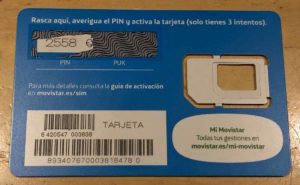
So, make sure you record the PIN # in a safe and easy to access place – and NOT in the phone! You definitely do not want to get locked out of your cell phone while traveling.
Here’s what I do. I place a business card inside my cell phone’s protective case with my contact info in case the phone gets lost or misplaced. I also write the SIM card PIN # there (which is different from my phone’s security password).
Phone Number:
With the new SIM card, you will be getting a local phone number from that country. So, write down your new number in a couple safe places so you won’t forget it. Like above, you could also put it on the business card or on a piece of tape stuck to the phone.
Don’t forget to pass along your new phone number to any family, friends or business colleagues who might be calling or texting you.
Keeping Your Original SIM Card Safe

Often, they will tape the “home country” SIM to this package. Make sure they are not putting tape on the electronic chip side of the SIM. In fact, make sure there’s not real sticky tape on either side.
That’s because on a recent trip, my U.S. SIM card got gunked up from the tape so I couldn’t safely put it back into my phone. As a result, I had to go to my ATT store once back home to get a replacement SIM before I could use my cell phone again.
How To Insert & Remove a SIM Card
Practice at home so you’ll know how to remove and exchange the SIM cards. Even if the store agent in the foreign country does it for you, you’ll need to do it yourself when you return back home – probably at your arrival airport so you can get back online as soon as possible.
For iPhones, you remove the SIM card by inserting a SIM removal tool – or a small paper clip works just as well – into the small hole on the side of your phone. I’m not familiar with Android phones, but here’s a good article that tells you how.
- Credit: HowToGeek.com (both photos)
When packing, make sure to take either the SIM removal tool that came with your phone or a small paper clip. The larger size paper clip is definitely too big.
Some Additional SIM Card Tips
- Be aware that most European SIM cards expire after a certain period of inactivity (typically 3–12 months), so use up the credit or hand it off to another traveler. This expiration period may also be true for other countries.
- Be sure to save your contacts’ phone numbers in the phone itself, rather than on the SIM card. Otherwise, you’ll lose access to them when you switch SIMs.
- Before landing in your first foreign country, make sure to turn OFF your phone’s cellular data and roaming – so you are not charged expensive roaming fees as soon as you arrive on foreign soil.
Use Airplane Mode (before getting a local SIM card)
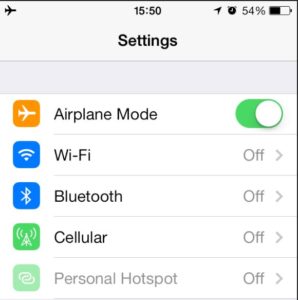
Airplane Mode turns off all your phone’s antennae – Cellular, WiFi, Bluetooth, and GPS. At that point, you can’t send or receive anything. Modern phones usually let you turn WiFi back on while in Airplane Mode.
Connecting to a WiFi network will allow you to access your web browser, download email, or use any internet-based apps.
Caution About Texts: If you’re in Airplane Mode – and have a WiFi connection – you can send non-SMS texts over the WiFi connection. This would be by using iMessage on an iPhone or other messaging apps (like WhatsApp). However, you will not be able to send a plain old SMS text to someone (without the already mentioned apps) because the cellular feature is turned off.
HAPPY TRAVELS – HOPE YOU’RE MORE CONFIDENT ABOUT USING A SIM CARD!
Comments: Have you used local SIM cards on your travels? How was your experience? What tips would you like to add?



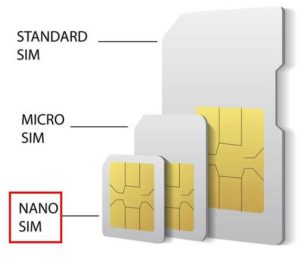
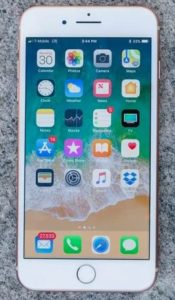







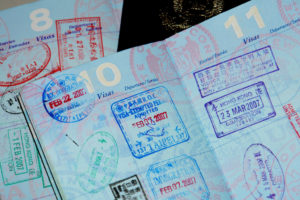
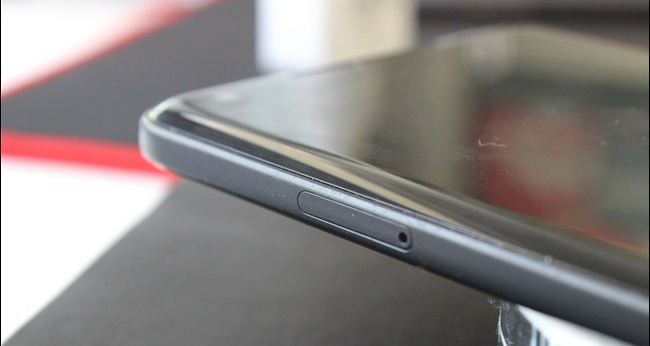
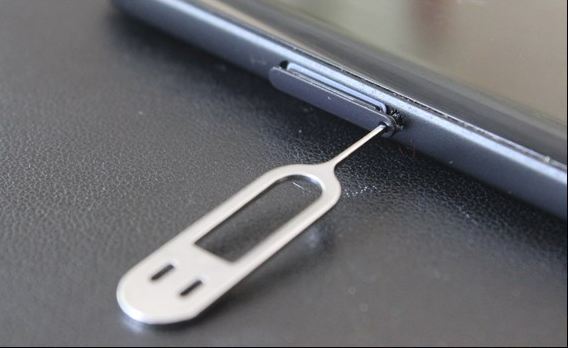




Hi Janet!
Great comprehensive post. On my trip I pretty much need a new SIM every month so I get better each time.
I found that getting a SIM in town is best as you do. Usually the airport kiosks are quick and convenient but if you go to a local cell store you get more options as well as better prices. I avoid the little shops or 7-11s that carry multiple carriers also. The most knowledgeable people tend to be at the main store for any given country.
When I get a new SIM I put my regular card inside my iPhone case. No sticky tape to worry about and I would only lose it if I lose my phone. I never take my case off unless I need to access my SIM card so I won’t inadvertently lose my card but it will always be with me.
Thanks so much, Scott for your comments. As a months-at-a-time traveler abroad (currently in Asia!), you have volumes of experience to share with me and other readers. Great suggestions!
I noticed that most of the latest smartphones only accept nano sim chip.
Thank you & yes, that does seem to be true about the Nano SIM cards.
Thanks for the comprehensive info, Janet. I have two questions.
First, what is the impact on your friends and family back home? Will they incur new charges to text or call you when you are using the local SIM card?
Second, if you are traveling with another person and want to be able to text and call when separated, is it important that you both get local SIM cards?
Thanks!
Kevin
You’re welcome, Kevin, and thank you for the good questions! On the first one, I’m afraid I don’t have the answer as I have never needed to have contact with anyone back home in the States by phone (call or text). Perhaps, you can check with your local cellular company to ask about getting phone calls from other countries. Regarding the second question: Certainly, both traveling companions having local SIM cards would be the most convenient & inexpensive way of frequent communication. However, if not needed that much, you could always have one person get a local SIM and make sure the 2nd person has access to “reasonably” priced Intl Plan from their home carrier (like my ATT at $10/day) for when really needed. And, making sure you also use an app like What’sApp to communicate (which can be set to only work with WiFi) if you don’t want big intl roaming fees. So, as you can see, different options & no one right answer – depending on your travel needs for making local calls vs calls “back home” and how much you want/need to have instant access to the phone & internet vs waiting until you can locate a Wifi zone. Hope this helps a little!